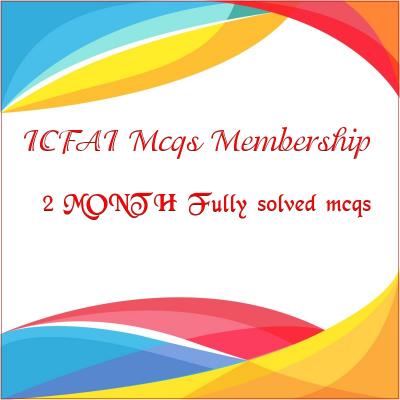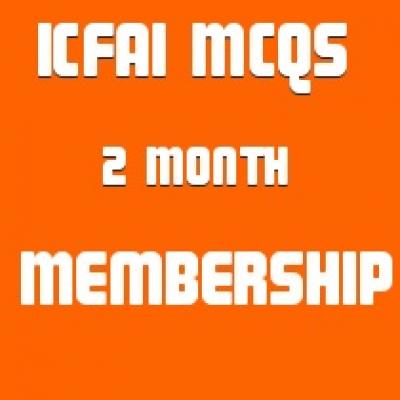CONSUMER BEHAVIOR
Price:
Rs500
CASE: II Exposure, Attention, and Comprehension on the Internet
The Internet universe literally grows more cluttered by the minute. According to Network Solutions, Inc., which registers the vast majority of Web addresses around the world, about 10,000 new addresses are registered each day. That means by the time you finish reading this case, about 60 new domain names will have been gobbled up. With all the clutter on the Web, how have some firms been able to stand out and attract millions of customers?
First, there are some basics to which online firms must attend. These cost little more than some time and a little creativity. The first is creating a good site name. The name should be memorable (yahoo.com), easy to spell (ebay.com), and/or descriptive (wine.com—a wine retailer). And, yes, ideally it will have a .com extension. This is the most popular extension for e-commerce, and browsers, as a default, will automatically add a .com onto any address that is typed without extension.
The second priority is to make sure the site comes up near the top of the list on any Web searches. If you use Lycos.com to perform a search for “used books,” you get a list of more than 2.6 million websites. Studies have shown that most people will look only at the top 30 sites on the list, at most. If you are a used-book retailer and you show up as website #1,865,404 on the search list, there is a very good chance you will not attract a lot of business. A 1999 Jupiter Research study reveals that “searching on the Internet” is the most important activity, and Internet users find the information they are looking for by using search engines and Web directories. A good Web designer can write code that matches up well with search engine algorithms and results in a site that ranks high on search lists.
Virtually all popular websites have those basics down pat. So the third step is to reach out proactively to potential customers and bring them to your site. Many companies have turned to traditional advertising to gain exposure. Television advertising can be an effective option—albeit an expensive one. In late January 1999, hotjobs.com spent $2 million—half of its 1998 revenues—on one 30-second ad during the Super Bowl. According to CEO Richard Johnson, so many people tried to visit the site that the company’s servers jammed. Johnson says the number of site hits was six times greater than in the month before. A quirky ad campaign may or may not help. Pets.com, now de-func, built its image around a wise-guy sock puppet. CNET, a hardware and software retailer, ran a series of television ads featuring cheesy music, low-budget sets, and unattractive actors. One such ad featured two men—one in a T-shirt that said ”you,” another in a T-shirt labeled “the right computer” – coming together and joining hands thanks to the efforts of another guy in a CNET T-shirt. The production quality was rudimentary enough that any sophomore film student could have produced it. The spots were so bad that they stood out from the slick, expensive commercials to which viewers were accustomed. Critics ripped the campaign to shreds, but CNET called it a success.
Other Internet firms have used sports sponsorships to increase visibility. CarsDirect.com, a highly rated site that allows consumers to purchase automobiles online, once purchased the naming rights to NASCAR auto race (the CarsDirect.com400). Lycos also has tried to make the most of NASCAR’s increasing popularity. It spent hundreds of thousands of dollars to have its name and logo plastered all over the car of popular driver Johnny Benson. Meanwhile, online computer retailer Insight and furniture seller galleryfurniture.com each targeted football fans by purchasing the naming rights to college bowl games.
Of course, if you can reach consumers while they are in front of their computers rather than their television sets, you may stand an even better chance of getting them to your site. However, typical banner ads are inefficient, averaging click-through rates of only about 0.5 per cent (only one of every 200 people exposed to the ad actually clicked on the ad). Too often, banner ads are just wallpaper; consumers may see them but they usually are not sufficiently stimulated to click-through. However, Michele Slack of the online advertising group Jupiter Communications believes banner ads can be useful if used correctly. “The novelty factor is wearing off,” she says. But “when an ad is targeted well and the creative is good, click-through rates are much higher.”
An alternative way to reach people who are already online is through partnerships. One of the most visible examples of such an alliance is the one between Yahoo! And Amazon.com. Let’s say you’re working on a project on the Great Depression and you want to see what kind of information is available online. If you go to Yahoo! And type in “Great Depression,” you will not only be presented with a list of websites, but you will also see a link that will allow you to click to see a list of books on the Great Depression that are available through Amazon. Another example of a successful partnership was forged in 1998 between Rollingstone.com and the website building and hosting service Tripod. Every one of the 3,000 artist pages on Rollingstone.com contained a link to Tripod. The goal was to encourage fans to use Tripod’s tools to build webpages dedicated their favorite singers or bands. According to the research company Media Metrix, during the course of the alliance Tripod jumped from the Web’s fourteenth most popular website to number eight. Alliances with nonvirtual companies are another options. In 2003, the Internet classified firm CareerBuilder kicked off a cross-promotional campaign with major Internet firms, including AOL and MSN.
A less subtle but nonetheless effective way to build traffic is to more or less pay people visit your site. One study showed more than half of Internet consumers would be more likely to purchase from a site if they could participate in some sort of loyalty program. Hundreds of online merchants in more than 20 categories have signed up with a network program called ClickRewards. Customers making purchases at ClickRewards member sites receive frequent-flier miles or other types of benefits. Mypoints.com offers a similar incentive program in which customers are rewarded with air travel, gift certificates and discounts for shopping at member merchants. The search engine iwon.com was even more direct. It rewards one lucky visitor each weekday with a $10,000 prize. According to Forrester Research, companies in 2002 spent about $6 billion annually on online incentives and promotions.
Finally, some firms rely on e-mail to thoroughly mine their existing customer databases. The auction site Onsale (later merged with Egghead.com) proved just how successful e-mail can be. It sent out targeted e-mails to its customers based on their past bidding activities and previously stated interests. Click-through rates on these targeted e-mails averaged a remarkable 30 percent. E-mail marketing also holds promise for business-to-business firms. The Peppers and Rogers Group is a marketing firm that gives presentations around the United States. At the end of the presentations, people are invited to go to the company’s website and sign up for their e-mail newsletter, Inside 1 to 1. The newsletter invites readers to visit the Peppers and Rogers website to learn more about various articles, promote their products and services, and participate in forums. Inside 1 to 1 now boasts a subscriber base of 45,000, but the company estimates that about 200,000 people actually see it because subscribers forward it to their friends and colleagues. About 14,000 people visit the Peppers and Rogers site each week, with traffic often peaking immediately after the newsletter is sent.
As you can see, there is no one effective method for generating interest in a website. The same methods that have worked for some firms have failed for others. One certainty is that as the Internet grows and more people do business online, Internet firms will have to find ever more creative ways to expose customers to their sites and keep their attention once there.
Questions:
-
Consider the e-mail campaigns discussed in the case. Why do you think these campaigns were successful? Discuss the attention processes that were at work. Do you see any potential drawbacks to this type of marketing?
-
During the 2000 Super Bowl, ABC invited viewers to visit its Enhanced TV website. Fans could play trivia, see replays, participate in polls and chat rooms, and view player statistics. The site received an estimated 1 million hits. Why? Frame your answer in terms of exposure, attention, and comprehension.
-
Think about your own Web surfing patterns. Write down the reasons you visit sites. Which of the marketing strategies discussed in the case do you find most (and least) influential?
1. Case study solved answers
2. pdf/word
3. Fully Solved with answers







